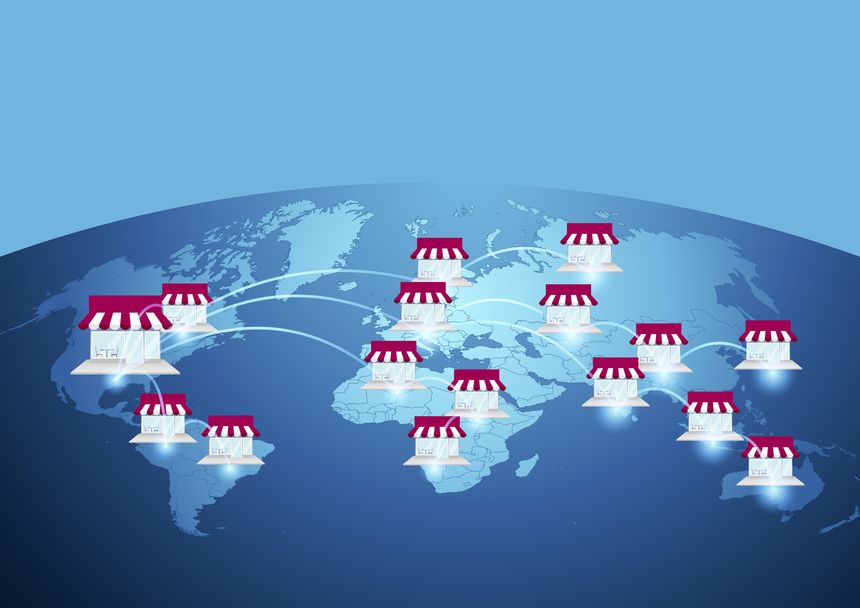Franchising offers the opportunity to rapidly expand a proven business model by allowing a franchisee to operate its own business while leveraging the success and recognition of an established brand. It also allows the franchisor to extend the reach of its brand fueled by capital supplied by the franchisee. To learn about how to raise capital in the United States, you can read Brown Rudnick’s article on that topic by clicking here.
Common international franchise structures include:
- Master franchising: Where the franchisor, for an initial (and usually sizeable) development fee, grants to a “master franchisee” under the terms of a “master franchise agreement” (MFA) the right to develop, or subfranchise within a geographic territory pursuant to a development schedule. Under each MFA, the master franchisee undertakes to act as the franchisor, with respect to subfranchisees and to provide support for them for which it receives an initial fee and continuing royalties. The master franchisee must remit to the franchisor a portion of these fees.
- Area development: Where the franchisor, in exchange for an initial development fee, grants to an “area developer” under the terms of a “development agreement” (DA) the right to develop for its own account more than one unit franchise within a geographic territory over time. Typically, the area developer is required to sign a separate franchise agreement for each unit developed under the DA and is not allowed to subfranchise.
- Area representation: The franchisor, for an initial fee, grants to an “area representative” under an area representative agreement the right to: (i) solicit and recruit unit franchisees that will open units within a territory pursuant to a development schedule; and (ii) provide training, site selection, and marketing assistance, to unit franchisees located in the territory. However, the area representative is not a party to the unit franchise agreements.
When contemplating an international franchise arrangement, prospective franchisees and franchisors should consider the following:
- Franchise Fee: Franchisees must pay an initial fee for the right to operate the relevant franchise.
- Royalties: Franchisees usually pay ongoing royalties to the franchisor, often calculated as a percentage of gross sales.
- Territory: The franchise agreement normally defines the territory where the franchisee has some level of protection, which may consist of complete exclusivity in all channels of distribution, or as more typical, a limited level of protection, such an agreement that neither the franchisor not its affiliates will operate, or franchise or license another party to operate, a unit using the same marks and system as the unit franchisee.
- Training and Support: Franchisors generally provide training and ongoing support to help franchisees operate their businesses successfully.
- Brand Standards: Franchisees are typically required to adhere to standardized marketing and branding guidelines prescribed by the franchisor in order to ensure uniformity among franchisees.
- Initial Term: The duration of the franchise agreement and renewal terms are extremely important in securing long-term success within a franchise agreement. They provide stability and continuity for franchisees, minimize risks and uncertainties for both parties, and allow for the negotiation of favorable terms.
- Market Research: It is essential to understand the target country's economic conditions, consumer preferences, cultural and political nuances.
- Legal and Regulatory Compliance: The parties must ensure that their franchise arrangement complies with applicable laws in the jurisdictions involved in connection with franchise arrangements, intellectual property, employment, antitrust, tax, foreign export controls, exchange controls, restrictions on remittances and data privacy while considering that in certain instances local laws may supersede the terms of the franchise agreement. To learn about how to protect your trademark rights globally, you can read Brown Rudnick’s article on that topic by clicking here.
- Currency: Managing currency exchange rates and other financial considerations, including potential currency fluctuations, help ensure the financial viability of an international expansion.
- Logistics and Supply Chain: Ensuring a stable and timely supply of goods and services supports the consistent operation of an international franchise.
Some U.S. franchises operating in Latin America include McDonald’s, Subway, KFC, Burger King, Pizza Hut, Hilton Hotels & Resorts, Dunkin’ Donuts, Carl’s Jr., Mail Boxes Etc. and Keller Williams. Some European franchises with a presence in Latin America include Telepizza (Spain), Decathlon (France), and Zara (Spain). Some Asian franchises in Latin America include MOS Burger (Japan), Yogen Früz (South Korea), Gong Cha (Taiwan), J.CO Donuts & Coffee (Indonesia) and OOTOYA (Japan). Examples of Latin American-based businesses that have expanded internationally using the franchising model include Havaianas (Brazil), Chocotería El Rey (Venezuela), Pollo Campero (Guatemala), Soyka (Mexico), OXXO (Mexico), El Corral (Colombia) and Tanta (Peru).
International franchising presents both opportunities and challenges. Success often lies on careful planning, understanding local conditions, and establishing strong partnerships.
If you are interested in establishing an international franchise in the region, or expanding your business internationally, let us know. Our team of international lawyers, many of whom are admitted to practice law in Latin American countries can assist you.




/Passle/62189924f636e915f48daeda/SearchServiceImages/2025-12-30-19-54-26-555-69542df2bd098cc4b3f8d9b7.jpg)
/Passle/62189924f636e915f48daeda/SearchServiceImages/2025-12-10-19-07-13-134-6939c4e13022ad27657fb9b9.jpg)
/Passle/62189924f636e915f48daeda/SearchServiceImages/2025-12-09-20-14-08-574-69388310973b7bf3db14f861.jpg)
/Passle/62189924f636e915f48daeda/SearchServiceImages/2025-10-20-20-51-52-599-68f6a0e866329001bbee3af4.jpg)